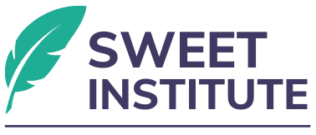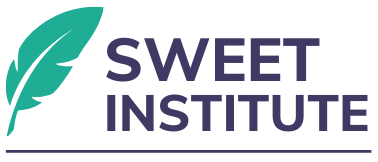Engagement as a Staff Responsibility: Reframing “Non-Engagement” in High-Acuity

Engagement as a Staff Responsibility: Reframing “Non-Engagement” in High-Acuity
Authors
Frederick Shack, LMSW1,4
Mardoche Sidor, MD1,2,3
Jose Cotto, LCSW1,5
Karen Dubin, PhD, LCSW2,4
Lesmore Willis Jr, MPA, MHA1
Gary Jenkins, MPA1
Affiliations
1Urban Pathways, New York, NY
2SWEET Institute, New York, NY
3Columbia University Center for Psychoanalytic Study and Research, New York, NY
4Columbia University, Department of Social Work, New York, NY
5New York University, Department of Social Work, New York, NY
Correspondence concerning this article should be addressed to Mardoche Sidor, MD, Urban Pathways, at msidor@urbanpathways.org
Abstract
Labeling residents or clients as “unengaged” obscures the systemic and relational determinants of participation in care. This paper advances a practice and policy reframing: engagement is primarily a staff and system responsibility. We situate this claim in evidence from therapeutic alliance research, trauma‑informed care, motivational interviewing, and implementation science, and operationalize it through the Four‑Stage Engagement Model—Sitting, Listening, Empathizing, and Collaborating. For individuals with high‑acuity needs (e.g., people experiencing homelessness, serious mental illness, substance use disorders, and trauma reactivity), staff behaviors and organizational conditions predict whether trust, safety, and collaboration emerge (Flückiger et al., 2018; SAMHSA, 2014; Miller & Rollnick, 2013). We provide a self‑assessment checklist and stage‑of‑change–aligned strategies that shift accountability from “fixing clients” to structuring environments and relationships that invite participation. We discuss implications for supervision, metrics, and policy.
Keywords
Engagement; Therapeutic Alliance; Trauma‑Informed Care; Motivational Interviewing; Implementation Science; Supportive Housing; Serious Mental Illness; Homelessness; Stages of Change
Introduction
Across mental health and housing services, “non‑engagement” is frequently attributed to client factors—ambivalence, denial, or “non‑compliance.” This framing undermines recovery‑oriented practice and can perpetuate stigma (Corrigan, Druss, & Perlick, 2014). Populations with high-acuity needs, those with co‑occurring mental health, substance use, medical comorbidity, and histories of homelessness, face layered barriers to trust and participation rooted in trauma and structural adversity (SAMHSA, 2014; Tsemberis, 2010). Decades of evidence highlight that the therapeutic alliance and service context often explain more outcome variance than specific techniques (Bordin, 1979; Flückiger, Del Re, Wampold, & Horvath, 2018; Wampold & Imel, 2015). We propose a corrective: engagement is a staff responsibility, supported by organizational systems that make safety, respect, and collaboration the default.
Theoretical Framework
- Four strands of evidence support a staff‑responsibility model of engagement: Therapeutic Relationship Science: Alliance quality robustly predicts outcomes across modalities and settings, suggesting that how staff relate—empathically, responsively, collaboratively—drives participation (Bordin, 1979; Flückiger et al., 2018; Norcross & Wampold, 2019).
- Trauma‑Informed Care: Safety, trustworthiness, choice, collaboration, and empowerment are essential design features; without them, survival defenses (fight/flight/freeze) impede engagement (SAMHSA, 2014).
- Motivation and Autonomy: Motivational interviewing and self‑determination theory emphasize autonomy support, evocation, and collaboration to strengthen intrinsic motivation (Miller & Rollnick, 2013; Deci & Ryan, 2000; Prochaska & DiClemente, 1984).
- Implementation Science: Sustainable engagement practices depend on organizational leadership, training, coaching, data feedback, and enabling contexts (Fixsen et al., 2005; Damschroder et al., 2009; Proctor et al., 2011). Attribution research further warns against the fundamental attribution error, which is, over‑ascribing behavior to personal traits rather than context, reinforcing the need to focus on system design (Ross, 1977).
Application/Analysis
Urban Pathways operationalizes staff‑led engagement via the Four‑Stage Engagement Model:
- Sitting (Presence): Staff practice consistent, calm visibility without pressure, treating presence itself as an intervention to co‑regulate arousal. This is reinforced in milieu routines and supervision.
- Listening (Goals First): Staff privilege residents’ values and definitions of a “good day,” using reflective listening and affirmations before proposing services.
- Empathizing (CEE + UPR): Staff cultivate corrective emotional experiences and unconditional positive regard to repair relational templates and decrease threat reactivity.
- Collaborating (Stage‑Matched): Staff align offers and tasks with the resident’s stage of change (e.g., information and curiosity in precontemplation; planning in preparation; barrier‑removal in action; relapse planning in maintenance) (Prochaska & DiClemente, 1984; Miller & Rollnick, 2013).
A practical tool—the Engagement Stage Self‑Assessment Checklist—helps staff identify the current stage, their own next behaviors, and common pitfalls (e.g., pushing goals before listening). Program‑level supports include leadership modeling, coaching, and will incorporate data dashboards tracking alliance proxies such as visit continuity, resident‑reported trust, and shared decision‑making indices (Proctor et al., 2011).
Implications
- Practice: Reframe “non‑engagement” notes into staff action plans (e.g., increase presence hours; schedule listening visits; review UPR language).
- Supervision: Use audio/role‑play to coach micro‑skills (affirmations, reflections, collaborative summaries) and to debrief countertransference.
- Training & Fidelity: Embed engagement micro‑skills into onboarding and booster sessions; audit charts for alliance‑consistent language.
- Metrics: Track engagement as a process measure (alliance, trust, shared decisions) and outcome measure (housing retention, reduced ED use) (Berwick, Nolan, & Whittington, 2008; Proctor et al., 2011).
- Policy: Replace compliance‑only KPIs with recovery‑oriented indicators; fund coaching and reflective supervision as core services.
- Equity: Target structural stigma by standardizing UPR and collaborative practices across roles (Corrigan et al., 2014).
Conclusion
Engagement is not a client trait but a relational and organizational achievement. When staff adopt the Four‑Stage Engagement Model and organizations align structures to support it, populations with high-acuity needs experience greater safety, agency, and partnership, conditions under which meaningful participation becomes possible.
References
- Berwick, D. M., Nolan, T. W., & Whittington, J. (2008). The triple aim: Care, health, and cost. Health Affairs, 27(3), 759–769.
- Bordin, E. S. (1979). The generalizability of the psychoanalytic concept of the working alliance. Psychotherapy: Theory, Research & Practice, 16(3), 252–260.
- Corrigan, P. W., Druss, B. G., & Perlick, D. A. (2014). The impact of mental illness stigma on seeking and participating in mental health care. Psychological Science in the Public Interest, 15(2), 37–70.
- Damschroder, L. J., et al. (2009). Fostering implementation of health services research findings into practice: A consolidated framework for advancing implementation science. Implementation Science, 4, 50.
- Deci, E. L., & Ryan, R. M. (2000). The “what” and “why” of goal pursuits: Human needs and the self‑determination of behavior. Psychological Inquiry, 11(4), 227–268.
- Fixsen, D. L., Naoom, S. F., Blase, K. A., Friedman, R. M., & Wallace, F. (2005). Implementation research: A synthesis of the literature. University of South Florida, FMHI.
- Flückiger, C., Del Re, A. C., Wampold, B. E., & Horvath, A. O. (2018). The alliance in adult psychotherapy: A meta‑analytic synthesis. Psychotherapy, 55(4), 316–340.
- Miller, W. R., & Rollnick, S. (2013). Motivational Interviewing: Helping people change (3rd ed.). Guilford Press.
- Norcross, J. C., & Wampold, B. E. (2019). Relationships and responsiveness in psychotherapy. Psychotherapy, 56(3), 421–430.
- Prochaska, J. O., & DiClemente, C. C. (1984). The transtheoretical approach: Crossing traditional boundaries of therapy. Dow Jones‑Irwin.
- Proctor, E., Silmere, H., Raghavan, R., et al. (2011). Outcomes for implementation research: Conceptual distinctions, measurement challenges, and research agenda. Administration and Policy in Mental Health and Mental Health Services Research, 38(2), 65–76.
- Ross, L. (1977). The intuitive psychologist and his shortcomings: Distortions in the attribution process. In L. Berkowitz (Ed.), Advances in Experimental Social Psychology (Vol. 10, pp. 173–220). Academic Press.
- (2014). SAMHSA’s concept of trauma and guidance for a trauma‑informed approach. HHS Publication.
- Stein, L. I., & Test, M. A. (1980). Alternative to mental hospital treatment: I. Conceptual model, treatment program, and clinical evaluation. Archives of General Psychiatry, 37(4), 392–397.
- Tsemberis, S. (2010). Housing First: The Pathways Model to End Homelessness for People with Mental Illness and Addiction. Hazelden.
This article is part of a collaboration between SWEET Institute and Urban Pathways
Read the full scientific version HERE










